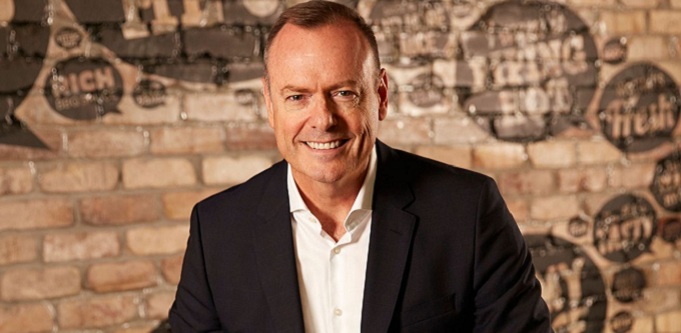
Domino's chief executive Don Meij. Source: Supplied.
Want to earn as much as Australia’s highest-paid chief executive? No problem. All you have to do is stick at your job and work hard for … 669 years.
That’s how long it would take for an ordinary Australian on the median wage to earn as much as Don Meij, boss of pizza chain Domino’s Pizza Group, earns in one year.
A new report by the Australian Council of Superannuation Investors (ACSI), released on Tuesday, named Meij as Australia’s highest-paid executive, earning a massive $36.8 million last year.
By contrast, Treasury puts the median wage — the best measure for the earnings of an ordinary Australian worker — at just $55,063. That’s one-669th what Meij earns.
The second-highest-paid chief executives, according to the report, were Peter and Steven Lowy, joint heads of shopping centre giant Westfield and sons of Westfield founder Frank Lowy. Together they earned $25.9 million.
Behind the Lowy brothers was Nicholas Moore, chief executive of Macquarie Bank, on $25.2 million.
Chris Rex, chief executive of Ramsay Healthcare, came in fourth with an income of $22.3 million. He was followed by James Hardie Industries chief Louis Gries on $18 million.
Last year’s top-earning chief executive, Qantas’ Alan Joyce, dropped down to eighth spot, with a pay packet of $11.2 million.
See the top 10 below.

Source: ACSI
CEO pay hits record high
ACSI has been conducting an annual survey of ASX200 chief executives for 17 years. It looks at base pay, bonuses and other remuneration, such as stock and superannuation.
It said 2017 broke the record for the highest pay for chief executives of the biggest 100 companies listed on the stock exchange.
The median pay for an ASX100 chief executive was $4.36 million, 79 times the median wage. That was up 12.4% on last year.
The median pay for chief executives of the next 100 biggest companies, meanwhile, was $1.76 million, or 32 times the median wage. That was an increase of 22.1%.
ACSI also found an 18% increase in bonus payments.
The median ASX100 chief executive received 70% of their maximum bonus, while one in three received 80%.
A ‘sad state of affairs’
ACSI is a body set up by industry superannuation funds to monitor the governance and ethical standards of the businesses in which super funds invest.
ACSI chief executive Louise Davidson was scathing about this year’s results.
“At a time when public trust in business is at a low ebb and wages growth is weak, board decisions to pay large bonuses just for hitting budget targets rather than exceptional performance, are especially tone-deaf,” Davidson said.
“This may be a sign that boards have lost sight of the link between a company’s social licence and the expectations of communities and investors.
“It’s a sad state of affairs when bonuses have become such a sure thing. If this issue is not addressed voluntarily, we may need legislative intervention to give shareholders a greater say — such as we have seen in other markets, like the United Kingdom.”
ACSI would be “looking closely at bonus outcomes in the upcoming reporting season”, Davidson said.
“If they’re not transparent and reflective of performance, we will be recommending that our members vote against those remuneration reports.”
With ever-growing pools of assets, superannuation funds are becoming increasingly powerful shareholdings, with the power to influence votes on issues such as remuneration.
This article was first published by The New Daily. You can read it here.


COMMENTS
SmartCompany is committed to hosting lively discussions. Help us keep the conversation useful, interesting and welcoming. We aim to publish comments quickly in the interest of promoting robust conversation, but we’re a small team and we deploy filters to protect against legal risk. Occasionally your comment may be held up while it is being reviewed, but we’re working as fast as we can to keep the conversation rolling.
The SmartCompany comment section is members-only content. Please subscribe to leave a comment.
The SmartCompany comment section is members-only content. Please login to leave a comment.